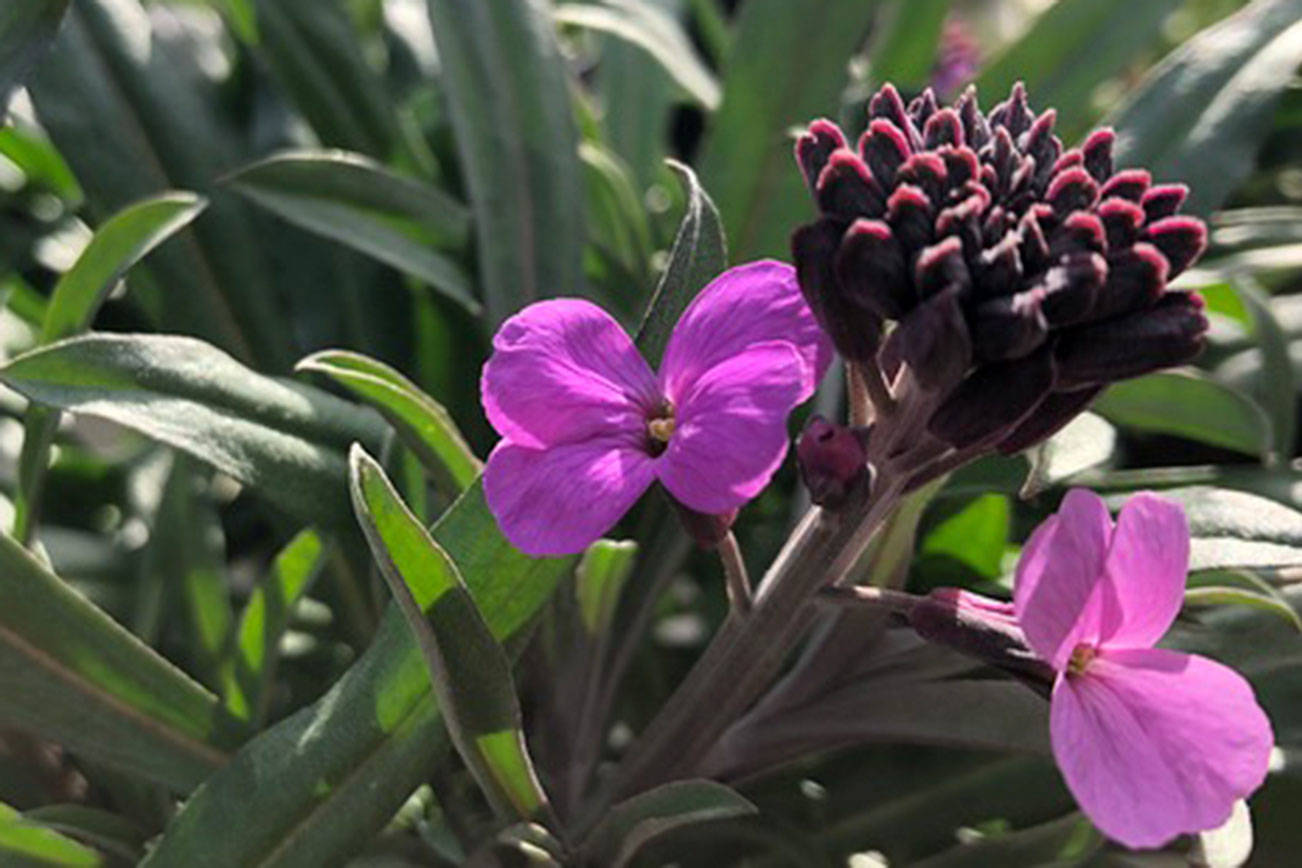By Steve Smith
When I think of the word “wallflower” or “shrinking violet” I conjure up an image of a timid plant. It prefers to grow in an obscure location where it will be barely noticed.
In reality, nothing could be further from the truth.
Popular in England, wallflowers have been planted for centuries where they are appreciated for their sweet fragrance, frost tolerance, bright and cheery yellow flowers, early spring blooming habit, and ease of cultivation. Because they are so easy to grow and have a tendency to reseed freely, you can find them sprouting up in cracks in pavement and in the crevices of walls – hence the name “wallflower”.
The standard wallflower is a biennial, which means it grows leaves the first season and in the second season it blooms, sets seeds and dies. In reality, most modern wallflowers are short-lived perennials that will bloom for a few years before they exhaust themselves and need to be replanted.
Of all the wallflowers on the market, my favorite is “Bowles Mauve”, which grows to 2 feet by 2 feet and is covered with mauve-colored flowers the entire summer, not just in early spring like the traditional varieties. What it lacks in the sweet fragrance of the straight species, it makes up for with its non-stop blooming.
About five years ago a breeder in Europe was able to cross “Bowles Mauve” with the traditional species and come up with a new series that is long blooming and has a wide color range. These are called Erysistible “Tricolor”, “Sunset”, and “Yellow”. The botanical genus for wallflower is Erysimum, which explains the clever marketing name of “Erysistible”.
There are other new hybrid wallflowers. “Winter Orchid” and “Winter Passion” have multi-colored flowers of red, purple and orchid all on the same plant, along with a lovely sweet fragrance. And “Super Bowl Mauve” claims to be even better than the original, blooming weeks sooner and sporting fragrance.
Wallflowers are easy to grow as long as you give them good drainage and a sunny location. They are the perfect plant for interjecting some early blooms into the garden and with the new hybrids, many will continue to bloom throughout the summer. A little trimming as the blooms fade will always help keep them vigorous and in constant color. Don’t be put off by their misleading name, they are garden standouts that are anything but shy and retiring. Give some a try this spring and find out for yourselves.
Steve Smith owns Sunnyside Nursery in Marysville. info@sunnysidenursery.net
P.S. – Sunnyside will be hosting two free classes, “Want an Emerald Green Lawn?”, March 7 at 10 a.m. March 8 at 11 a.m. For details go to www.sunnysidenursery.net


